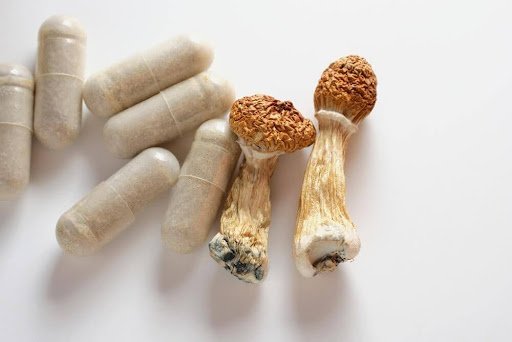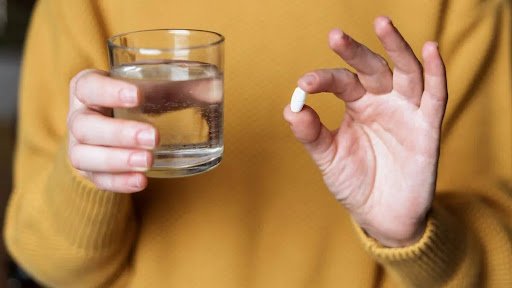Psilocybin, a naturally occurring psychedelic compound found in certain species of mushrooms, has gained significant attention for its potential therapeutic benefits. As research expands, so does the interest in how to use psilocybin safely and effectively. One of the most critical factors in this discussion is understanding the psilocybin dosage—how much to take, what effects to expect at different levels, and how it relates to medical and therapeutic contexts.
In this article, we will explore psilocybin dosage comprehensively, covering its effects, factors influencing dosage, and guidelines supported by experts such as the Psychedelic Medical Association. Whether you’re a researcher, a medical professional, or someone curious about psilocybin, this article provides a detailed, informative overview.
What is Psilocybin?
Before diving into dosage specifics, it’s important to understand what psilocybin is. Psilocybin is a psychedelic compound primarily found in “magic mushrooms.” Once ingested, psilocybin converts to psilocin, the active compound that interacts with serotonin receptors in the brain, causing alterations in perception, mood, and cognition.
Historically, indigenous cultures have used psilocybin-containing mushrooms in religious and healing rituals. Modern science is now uncovering its potential in treating mental health conditions such as depression, anxiety, PTSD, and addiction.
Understanding Psilocybin Dosage
Psilocybin dosage refers to the amount of psilocybin consumed and is usually measured in milligrams (mg) of pure psilocybin or in grams (g) of dried mushrooms. The effects of psilocybin are dose-dependent, meaning that different doses produce varying intensities and qualities of psychedelic experiences.
Common Dosage Ranges
- Microdose (0.1 to 0.3 grams dried mushroom): Sub-perceptual effects; users typically experience subtle improvements in mood, focus, and creativity without hallucinations.
- Low Dose (0.5 to 1 gram): Mild psychedelic effects; slight alterations in perception, mood, and thought processes.
- Moderate Dose (1 to 3 grams): Noticeable psychedelic experience with visual and sensory distortions, emotional changes, and altered perception of time.
- High Dose (3 to 5 grams): Intense psychedelic experience with strong visual and auditory hallucinations, ego dissolution, and profound spiritual or mystical experiences.
- Heroic Dose (5+ grams): An extremely intense experience, often with a complete loss of ego and potentially overwhelming psychological effects. This dose is usually reserved for experienced users or clinical settings.
Factors Influencing Psilocybin Dosage
Several factors influence how much psilocybin an individual should take:
1. Body Weight and Metabolism
Larger individuals may require a higher dose to experience effects, while smaller individuals may be more sensitive.
2. Tolerance
Psilocybin builds tolerance quickly. Regular users may require higher doses to achieve similar effects, but tolerance usually fades after a few days of abstinence.
3. Set and Setting
“Set” refers to the user’s mindset, and “setting” is the environment in which psilocybin is consumed. These psychological and environmental factors can significantly affect the experience’s intensity and quality, sometimes as much as dosage itself.
4. Purpose of Use
Therapeutic, recreational, or spiritual goals can influence dosing. For example, microdosing aims at functional enhancement without hallucinations, while therapeutic doses are typically moderate to high, under controlled conditions.
Guidelines from the Psychedelic Medical Association
The Psychedelic Medical Association (PMA) is one of the leading organizations advocating for research, education, and safe use protocols surrounding psychedelics, including psilocybin. The PMA emphasizes the importance of responsible dosing and clinical supervision.
PMA Recommended Dosage Protocols
- Clinical Trials: In controlled clinical environments, doses are carefully calibrated—usually between 20 to 30 mg of pure psilocybin per session, roughly equivalent to 3 to 5 grams of dried mushrooms.
- Screening: Prior to administration, thorough psychological and physical health screenings ensure patient safety.
- Set and Setting: Sessions take place in calm, controlled environments with trained therapists present.
- Post-Session Integration: Psychological support following the experience is crucial for processing insights and maintaining benefits.
These guidelines aim to maximize the therapeutic potential while minimizing risks, such as anxiety, panic, or adverse psychological reactions.
How to Measure Psilocybin Dosage Accurately
One challenge with psilocybin use is the variability in psilocybin content between mushroom species and even individual mushrooms. Psilocybin content can vary widely:
- Psilocybe cubensis: Typically contains about 0.6% psilocybin by dry weight.
- Psilocybe semilanceata (Liberty Caps): Can contain up to 2.5% psilocybin.
Given this variability, dosing based on dried weight can be imprecise. For medical and research purposes, purified psilocybin in capsule form is preferred for accurate dosing.
Potential Risks of Incorrect Dosage
Taking too much psilocybin or taking it in an unsafe context can lead to:
- Anxiety and panic attacks
- Paranoia and confusion
- Nausea and physical discomfort
- “Bad trips” that may cause psychological distress
- Accidents or risky behaviors due to impaired judgment
That is why responsible use, under guidance or with thorough preparation, is essential.
Therapeutic Uses and Dosage Trends
Interest in psilocybin therapy has surged due to promising results in clinical trials. Research suggests that:
- Moderate to high doses of psilocybin can lead to lasting improvements in depression and anxiety symptoms.
- Low doses or microdoses are under investigation for their potential to enhance creativity and cognitive function without intense psychedelic effects.
- The Psychedelic Medical Association continues to work on establishing standardized dosing protocols as research evolves.
Conclusion
Understanding psilocybin dosage is vital for anyone interested in the therapeutic or personal use of this powerful psychedelic. Dosage affects the intensity and nature of the experience, safety, and overall outcomes. With the backing of organizations like the Psychedelic Medical Association, guidelines are developing that help ensure psilocybin’s benefits can be accessed responsibly and effectively.
Whether microdosing for subtle cognitive benefits or participating in a guided therapeutic session, the right dose depends on many factors—body, mindset, environment, and purpose. As research continues, so will the refinement of dosage recommendations, moving us closer to the safe integration of psilocybin into modern medicine and wellness.



